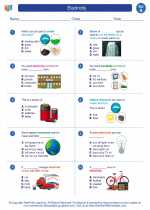What are Stomata?
Stomata are small pores or openings found on the surface of leaves and stems of plants. They are surrounded by two specialized cells called guard cells, which control the opening and closing of the stomatal pore.
Function of Stomata
Stomata play a key role in the process of photosynthesis, as they allow for the exchange of gases. Carbon dioxide enters the plant through the stomata, which is essential for the process of photosynthesis. Additionally, stomata also facilitate the release of oxygen, a byproduct of photosynthesis, and the process of transpiration, which involves the loss of water vapor from the plant.
Structure of Stomata
Each stoma consists of two specialized cells known as guard cells. These cells contain chloroplasts and are responsible for regulating the opening and closing of the stomatal pore. When the guard cells take in water, they become turgid and the stomatal pore opens. Conversely, when they lose water, they become flaccid, leading to the closure of the stomatal pore.
Regulation of Stomata
Stomatal opening and closing are regulated by various internal and external factors. Internal factors such as the plant's water status and carbon dioxide levels, as well as external factors like light intensity and humidity, can influence the behavior of the guard cells and ultimately control the aperture of the stomatal pore.
Importance of Stomata
Stomata are essential for the survival of plants, as they facilitate the exchange of gases necessary for photosynthesis and regulate the loss of water through transpiration. Additionally, they play a role in the plant's response to environmental cues, making them critical for overall plant function and adaptation.
Understanding the role and regulation of stomata is crucial for comprehending the mechanisms of photosynthesis and transpiration in plants. It also provides insights into how plants respond to changes in their environment and maintain their physiological processes.Feel free to explore the interactive diagram below to deepen your understanding of stomata and their functions:[Stomata] Related Worksheets and Study Guides:
.◂Science Worksheets and Study Guides First Grade. Electricity

 Worksheet/Answer key
Worksheet/Answer key
 Worksheet/Answer key
Worksheet/Answer key
 Worksheet/Answer key
Worksheet/Answer key
